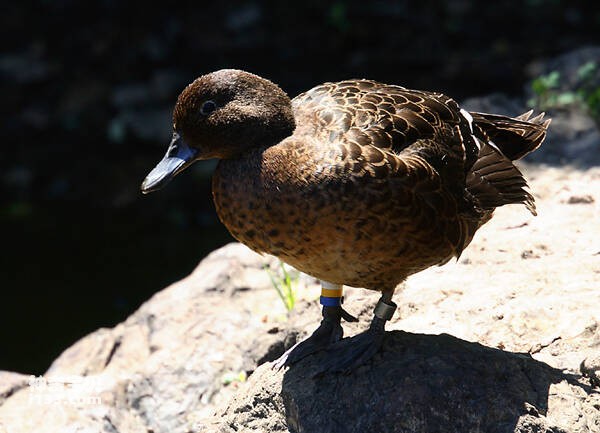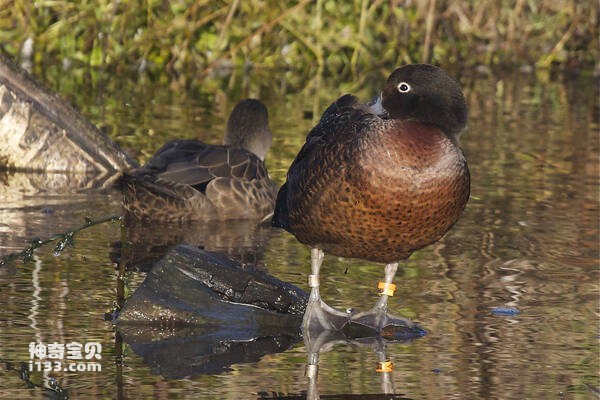Anas aucklandica
IUCN
LCBasic Information
Scientific classification
- name:Anas aucklandica
- Scientific Name:Anas aucklandica
- Outline:Waterfowl
- Family:
Vital signs
- length:About 48 cm
- Weight:500-600g
- lifetime:No textual research information is available
Feature
The face is an even dark brown, with a thin white ring around the eyes
Distribution and Habitat
The Auckland Island teal was originally found on Auckland Island, a small island in New Zealand. It is found in Australia and New Zealand, including Australia, New Zealand, Tasmania and nearby islands. The habitat is found along the island coastline, tidal creeks and coastal forests.
Appearance
Aoshima duck is a medium-sized swimming bird with a body length of 48 cm, a male duck with a wingspan of 128-152 cm and a weight of 600 grams. The female has a wingspan of 105-137 cm and weighs 500 grams. Unisexual, the face is a uniform dark brown, with a fine white ring around the eyes, dark brown feathers with white edges, chestnut-colored breasts; Blue-black beak; Legs and feet SLATE gray; The feathers on the sides of the male duck's head turn a glossy green during breeding. White spots on the side.
Details
There are three subspecies of the Aoshima duck, Anas aucklandica.

Oshima ducks nest in dense coastal vegetation. The main activity time is dusk to night, feeding on Marine invertebrates, but also eating insect larvae and coastal small mollusks or algae and algae.

During the breeding season, the Oshima duck flock consists mainly of subadult and adult birds. The annual reproduction rate is low, from late October, 3-4 eggs are laid per nest, and the first chicks are seen hatching in December. Captivity takes longer than the wild, with hatching completed in 30 to 35 days and parental care and feeding for 60 to 70 days.
Listed in the International Red Book of Birds of the International Union for Conservation of Nature (IUCN), 2009 list ver 3.1 - Vulnerable (VU).
Listed in Appendix I, Appendix II and Appendix III of the Convention on International Trade in Endangered Species of Wild Fauna and Flora (CITES) 2019 edition and the Regulation on the Protection of Endangered Species of Animals and Plants.
Protect wild animals and eliminate wild meat.
Maintaining ecological balance is everyone's responsibility!








